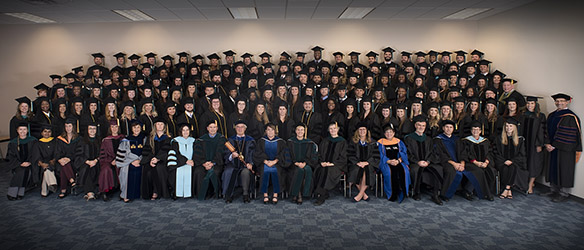
According to an article in the International Journal of Integrated Care, “Occupational therapy is a profession concerned with improving well-being for persons of all ages through enabling occupations to promote health and participation in society.”
Heidi Woolley, MSOT, OTD, OTR/L, Associate Professor and Assistant Program Director of OT programs at the University of St. Augustine for Health Sciences (USAHS), argues that the natural environment is where things are best learned and generalized.
Dr. Woolley is a school-based OT thought leader who has studied the impact of integrated OT services in educational settings. At USAHS, she empowers the next generation of OT practitioners with strategies to employ an integrated OT service model. She lives by her motto, “Don’t just share what you do, show what you do.”
You can listen to the podcast here:
A case for an integrated OT service model
Dr. Woolley talked with Jayson Davies, MA, OTR/L, host of the OT Schoolhouse Podcast, a resource for occupational therapy practitioners working in schools. She shares insights on integrated OT services, the importance of understanding individual student needs, collaborating with teachers and adapting interventions. Dr. Woolley highlights insights and strategies for fostering an inclusive learning environment, ranging from grasping various service delivery models to seamlessly incorporating multimodal teaching methods. She also explains the diverse aspects of integrated services, such as co-teaching, and provides insight into caseload management and service models.
Dr. Woolley’s clinical practice has centered on outpatient pediatrics and school-based work. As a school-based OT clinician and administrator, she helped to develop a co-teaching model for OTs and special education teachers.
Practical application of OT co-teaching within the school environment
Dr. Woolley co-authored the research article “Integrated Services or Pullout? Factors Influencing School-based Occupational Therapy Delivery Models,” published in the Journal of Occupational Therapy, Schools, & Early Intervention.
Dr. Woolley describes how she created a co-teaching therapy model by helping to adapt classroom activities to accommodate various abilities and physical levels.
She spent time in the classroom, the natural environment, working one-on-one with children, such as one student with cerebral palsy (CP). She says that she showed the teacher how to position the student and rotate her hips, which improved her posture and allowed her to access the table.
Dr. Woolley attests that to have an effective model, OTs should become co-teachers and invest in training those who spend time with the students. “No matter how magic my wand is, it’s not going to fix things”. She argues that what helps individuals is being a teacher to the teacher or the parents.
She says that kids learn through repetition and that an OT’s role is to guide others to implement OT methods and make them a part of the daily routine. “You have to do the training portion, including collaboration, interprofessional talking, teaming and planning.”


Equipping the next generation of OTs with the right resources
Dr. Woolley is dedicated to training aspiring OTs for evidence-based practice and preparing them to make a positive impact on others.
Davies advocates that we should better understand the system in which we provide services. Dr. Woolley agrees, “Remember, you are support services – you need to do what OTs are great at and analyze the environment.” She explains that it’s critical to fit into the environment and system already in place and analyze their openness to working with you.
Dr. Woolley reminds her USAHS students that for collaborative interventions to be successful, “we must work together as an interprofessional team and break down silos.” She underscores the need to integrate the experience of the teacher, the OT, the speech-language pathologist (SLP) and other professionals to provide the best services.
Pathways to publish and advance your education
Research is a key component of effective occupational therapy, according to Dr. Woolley.
She considers OT as a force for good and emphasizes to USAHS graduates that part of their objective is to recognize their role as researchers. “It’s so important to get knowledge and statistics out there to find out what works and what doesn’t and to discover better models. Our students are coming out more and more able to do that and translate those results into evidence-based practice,” she says.
Dr. Woolley champions lifelong learning. She invites students to “use everything at your disposal to collaborate at a much larger level” through continuing education courses, online or in person, joining a journal club like AOTA’s, or listening to educational podcasts.
She prepares OT graduates to be adaptive and innovative. She reminds aspiring OTs to be purposeful and intentional about how they implement new techniques and strategies and to remember to collect data. “Change and progress come from trying something new,” she says.
Listen to Dr. Woolley’s conversation on the OT Schoolhouse podcast, and watch a video to learn more about her OT experience.
Ready for an advanced OT education? Learn more about USAHS’ collaborative graduate OT programs and apply today.






